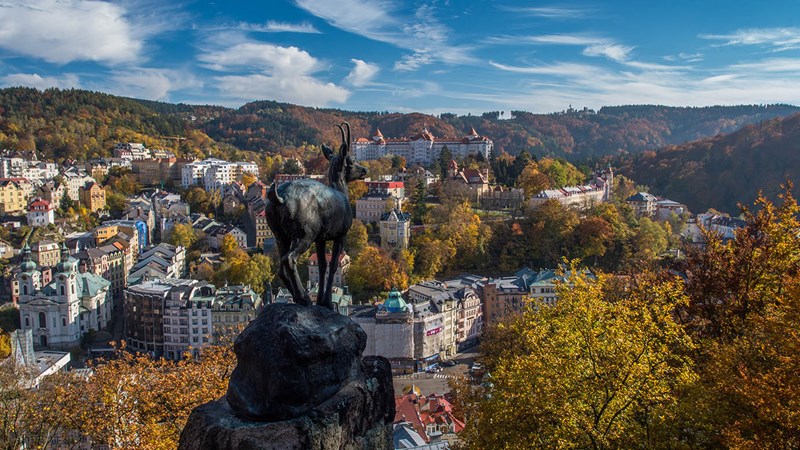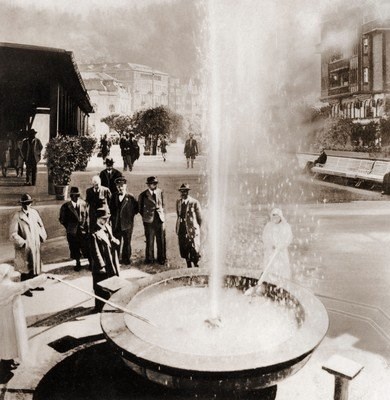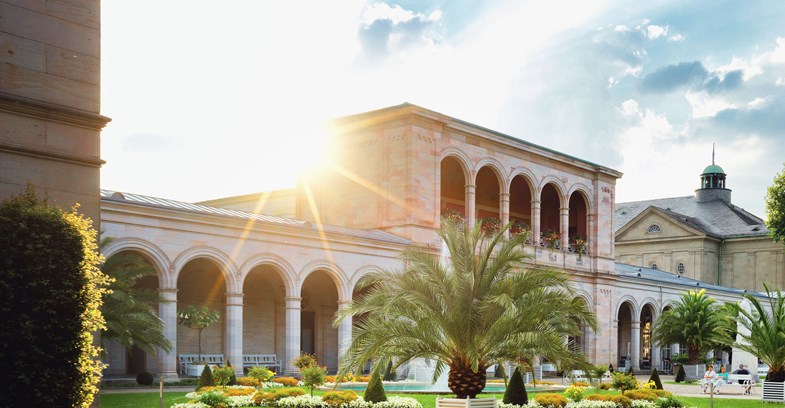Spa History
of Karlovy Vary
Legend of the discovery of the local springs
From time immemorial, springs have arisen in the valley of the Teplá River. A legend says that the Emperor Charles IV and his entourage went on a hunting trip in the local forests. The Emperor's hunting dog was chasing a deer. The hunters suddenly heard the dog wailing, and thinking it had been injured in the chase immediately rushed to the place where the sounds of its barking could be heard. But they could not believe their own eyes when they saw the spectacle before them. The dog had fallen into a boiling pool, at the point where the most abundant geyser now rises - the Vřídlo. But rather than being scalded, its wounds were healed. When the Emperor was informed of this, he went to that place and dipped his limbs into the water, and his body was miraculously healed. After the water had cured his maladies, he ordered the foundation of a settlement in the area of the spring, and thus founded one of the Great Spa Towns of Europe.
Why is a chamois a symbol of the spa town and not a brave deer?
Why is a chamois a symbol of a spa town and not a brave deer? The explanation is simple. Karlovy Vary councillors, who ruled the city in 1850, wanted to place a statue of a deer on a rock above the river, but they hesitated so long that a private investor overtook them. Passionate hunter Baron August von Liitzow refused the theory that deer jumped off a cliff. He constructed the statue of a chamois there which was more reasonable in his opinion. Spa guests adopted it as a symbol and Stag's Leap (also Deer's Leap; Jelení skok) - albeit with a chamois - became a popular place for walks. In 1370, the Emperor granted Karlovy Vary the privileges of a royal town. The name of Charles IV soon attracted the nobility and wealthy burghers from the surrounding area. Scholars studied the curative composition of the mineral water and then prescribed treatments. At that time, people believed that diseases left through wounds, so spa guests bathed in thermal water for several hours every day until the diseases began to flow from their bodies through cracked skin.

New principles of spa treatment
In the 16th century, Karlovy Vary physician Václav Payer came up with the revolutionary idea that mineral water should be used not for bathing, but for drinking. This can be considered the beginning of the drinking cure. Patients rushed eagerly for the new treatment; however, since nothing old should be rejected, and in the 17th century weekly baths were interspersed with the drinking cure, sometimes up to 40 bowls of the hot spring water daily. In the 18th century, Dr. David Becher created order in the drinking regimen, by prescribing not only he amount of water but also the type of spring applicable to a particular patient. In addition, he forced patients to go directly to the springs, and thereby included another element in the spa treatment - movement. He determined the optimal combination of the drinking and bathing cures. These new principles of treatment led to the development of the city, and to the building of colonnades and walking paths in the forest. Mlynske lazne, Postovni dvur, the wooden colonnade of the Novy pramen and more were built. With the drinking cure came the use of spa cups made of porcelain, which replaced the original cups of tin or glass. The cup was not only practical, making it comfortable to drink while walking, but was also impressive and later served as a memento in the form of souvenirs.

The golden age of Karlovy Vary
The worldwide importance of the spas in the golden age was confirmed by the visits of important guests, such as Peter the Great, Franz Josef I., Johann Sebastian Bach, Ludwig van Beethoven, Antonin Dvorak and Johann Wolfgang von Goethe. Individual spa buildings came from this period - Lázně I to VI. The most important Spa I (called Císařské lázně meaning "Imperial spa"), dating from 1895, was the most modern complex of its time, and included a sophisticated system of tunnels and mechanisms for preparing peat baths, a glass elevator, steam heating, electrification, and the Zander Hall with sports equipment of the period.

